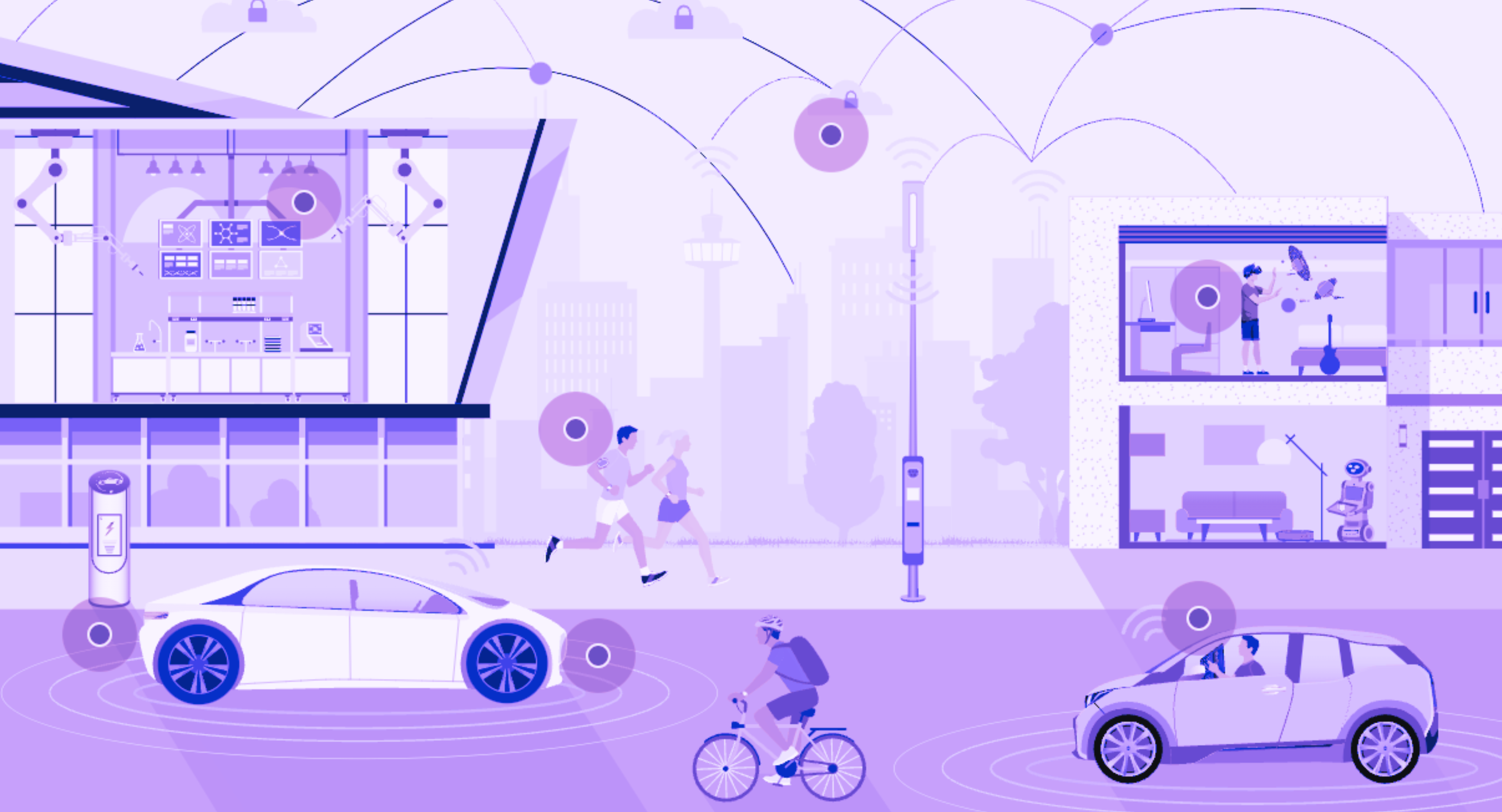Use Cases
Docs
Blog Articles
BlogResources
Pricing
Pricing4 key challenge for IoT Analytics and a First Principle Solution
Contributor, InfinyOn
Content
- Increase in Connected Devices
- Challenges of a Large IoT ecosystem
- A First Principle Solution
- Benefits of a Lightweight Data Streaming Solution
- Experience Edge Data Streaming Workflow in 10 minutes
Increase in Connected Devices
Internet of Things (IoT) refers to a network of connected devices, tools, machines, and sensors that communicate with each other and share data. These devices can be remotely controlled and receive commands from the cloud, providing users with a convenient way to manage and monitor their smart systems.
By combining various components such as hardware, connectivity means, cloud-native software, and user interfaces, IoT enables efficient asset and operation management, improved work safety and productivity, and more. By leveraging IoT, businesses have been working to optimize their operations, reduce costs, and improve sustainability. For example, smart devices can monitor energy consumption, flow rate, pressure, temperature, speed and more data points which provide insights on how to reduce waste, improve efficiency, quality etc..
According to Finances Online - The number of connected Internet of Things (IoT) devices crossed the global population in 2020. Currently, we have well over 13 billion IoT devices and growing.
In recent years the number of movable edge sensors has grown exponentially, driven by smart technology in cars, buses, trains, ships, aircraft, drones, and robots. These sensors provide rich information about their operating environment and open the door for new industrial use cases such as real-time asset monitoring, performance management, predictive maintenance, and more. The new world of digital representation of industrial assets is known as digital twins.
The purpose of these devices are to improve various aspects of society and human life by increasing the efficiency of the infrastructure that we as humans rely upon.
Challenges of a Large IoT ecosystem
There are 4 obvious challenges of the amount of connected devices:
- Collecting and Processing such large volumes of data at scale is not cheap or easy
- Connected infrastructures have additional challenges with security and data integrity
- Device maintenance and longevity of of edge devices is challenging with both internal and external threats
- All of IoT infrastructure has constrained system resources like compute processor, memory, on device storage etc.
On top of that movable sensors present developers and system architects with unique challenges for building a scalable infrastructure that processes data efficiently at the edge and in the cloud and ensures transmission without data loss. Sensors often face unstable or low-bandwidth networks that restrict sending data to the cloud to small time windows.
A First Principle Solution
In a small segment on the The Fully Charged Podcast, Ford CEO Jim Farley articulates the problem clearly. Based on the historical patterns of automotive manufacturing, Jim Says, “We have about a 150 of these modules of semiconductors all through the car, the problem is the software is written by 150 different companies, and they don’t talk to each other.”
An ideal data infrastructure for movable sensors need to give developers simple primitives and a unified interface for data collection and transformations at the edge and in the cloud. And a clean communication mechanism that handles networking and memory challenges under the hood.
The InfinyOn IoT edge data streaming runtime complements the InfinyOn Cloud data streaming platform to provide a solution to these challenges. Developers can now build efficient dataflows with reliable communication layers for pushing events to a downstream cluster.
If connected, InfinyOn IoT edge sends telemetry and events to the InfinyOn Cloud in real-time using mirroring.
If disconnected, the InfinyOn IoT edge stream processor caches events locally. When the connection resumes, the InfinyOn IoT edge stream processor brings InfinyOn Cloud up to date and continues mirroring until the subsequent connection loss.
InfinyOn IoT edge is a ~14 Mb binary that runs on ARMv7 chips on less than 256 MB memory. We are working with teams building the future of monitoring dynamic assets to push the boundaries of edge data stream processing.
Benefits of a Lightweight Data Streaming Solution
Our solution for IoT and edge data analytics is a lightweight datastreaming platform, that is cloud native and can be deployed on the edge. It is the first unified edge ready cloud native data streaming platform buit with Rust and extended by web assembly. It is compatible with MQTT and Apache Kafka for smooth transition experince.
The benefits of the InfinyOn solution are as follows:
- Reliable edge-to-cloud synchronization:
- Real-time publishing when connected.
- Edge collection without downtime when disconnected.
- Automatic synchronization after reconnect.
- Edge devices can be offline for extended periods (days).
- Reliable local caching for gigabytes of data.
- Simplified logic for edge clients.
- Reliable connection to the local clients.
- Intelligent processing at the edge with InfnyOn Smartmodules
Experience Edge Data Streaming Workflow in 10 minutes
Follow the tutorial in the documentation to experience the product. IoT caching and mirroring documentation (https://infinyon.com/docs/guides/iot-mirroring-cloud/)
Explore the Use Case page and let us know how we could help you with your edge analytics use cases.
Connect with us:
Please, be sure to join our Discord server if you want to talk to us or have questions.

